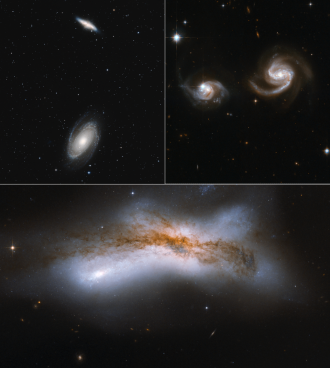Media release
From:
Astronomy: Milky Way may escape galactic collision with Andromeda *IMAGE*
The likelihood of a collision between the Milky Way and its neighbouring galaxy Andromeda may be smaller than previously thought, according to a new simulation described in Nature Astronomy.
The Milky Way is moving through the Universe and its path is influenced by the combined gravitational pulls of nearby galaxies, such as Andromeda, the Triangulum galaxy and the Large Magellanic Cloud. As such, previous research has suggested for over a decade that the Milky Way has a high likelihood of colliding with Andromeda, forming a new galaxy dubbed ‘Milkomeda’, in approximately five billion years.
Till Sawala and colleagues simulated the Milky Way’s movement through the Universe over the next 10 billion years using updated data from the Gaia and Hubble telescopes and revised estimates of the masses of local galaxies. They found that there is an approximately 50% chance that there will be no Milky Way–Andromeda collision in that time period. The authors suggest that including the gravitational pull of the Large Magellanic Cloud — a smaller galaxy orbiting the Milky Way — in the calculations, which was not considered in previous analyses, and accounting for uncertainties, could explain the reduced probability. Sawala and colleagues also suggest that a Milky Way–Large Magellanic Cloud merger is almost certain within the next 2 billion years, before any potential collision with Andromeda.
The authors note that even using the most up-to-date data, there is still some uncertainty about how the Milky Way–Andromeda system will evolve, and that future data from the Gaia telescope could help produce a more accurate simulation.
Multimedia




 Australia; International; WA
Australia; International; WA

